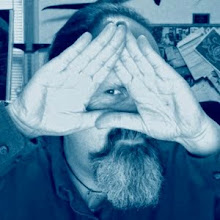In our previous project, you were introduced to subtractive sculpture. The faces you have been carving out of plaster are relief sculptures-- they are meant to be viewed from the front only.
For this project, you will be creating another subtractive sculpture out of plaster. However, this time, you will be making a full round sculpture (also known as a free-standing sculpture). Full round sculptures can be viewed from any angle. The subject matter for this sculpture will be an abstract human figure.

Jean Arp
1.
Abstract sculpture: sculptures that may be based on actual objects, but where the objects have been simplified, stylized, distorted, or otherwise altered to the point were they may become difficult or impossible to recognize.
In this blog post, we will be looking at the work of three modern artists that are known for their abstract sculptures of human figures-- Henry Moore, Jean Arp, and Barbara Hepworth. These sculptures were created over several decades in the 1900s.
After you look at the pictures below, there will be a few questions for you to answer-- answer by making a comment down at the bottom of this post.
(Sorry-- I don't have titles for these sculptures-- they are numbered for your convenience so that you may refer to individual pieces in your answers to the questions.)
Henry Moore
1898-1986
British sculptor Henry Moore is probably the most well-known of the three sculptors we will be looking at. Moore worked in stone, wood, and bronze, and plaster.
Note the progression of style in his sculpture, how he moves from figures that are stylized but recognizable to figures that become increasingly abstract.

1.

2.

3.

4.

Henry Moore making a plaster maquette

5.

6.

7.
Barbara Hepworth
1903-1975
Also from Great Britain, Hepworth and Moore met in college, and remained friends throughout their lives. Together, they played a major role in defining modernism in sculpture.

Hepworth carving a block of stone

1.

2.

3.

4.

5.
Jean Arp (a.k.a. Hans Arp)
1886-1966
French/German artist Jean Arp came out of the Surrealist movement in the earlier twentieth century, and was a member of the movement known as Dada. Arp was a sculptor, painter, and poet.

Arp in his studio, surrounded by plaster sculptures

2.

3.

4.

5.
Questions:
1. What kinds of things did Moore do to simplify the human figure and make it more abstract?
2. Look at the series of sketches by Moore (#4). What is he doing with these sketches? Describe in detail; be specific.
3. Look at the picture of Hepworth carving a block of stone. What exactly is she doing, and how is she doing it?
4. Would you say that Hepworth's gender (female) has anything to do with the appearance of her work? If so, what? If not, why not?
5. Compare and contrast-- How is Arp's and Moore's work similar? How is it different?
Answer these questions by making a "comment" below.
Please give detailed answers-- at least 2 or 3 sentences. Use whole sentences, and think about what you are going to say before you answer.
PUT YOUR NAME AT THE BOTTOM OF YOUR COMMENT
We will be starting this project next week. Before you begin carving your plaster, you will be required to produce a series of sketches (similar to what Moore has done in picture #4). You will then make a clay model of your sculpture-- this will help you to see where you will need to go with carving your plaster.

